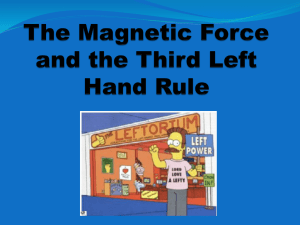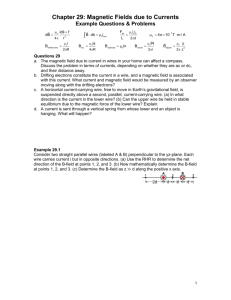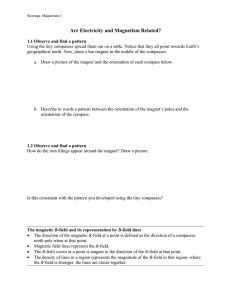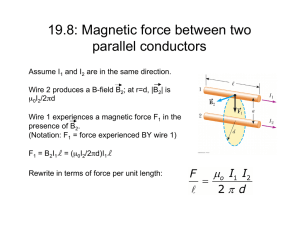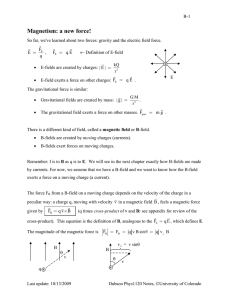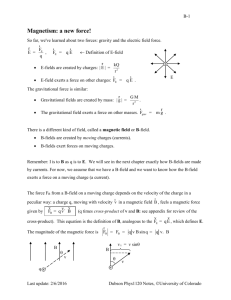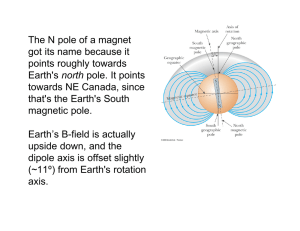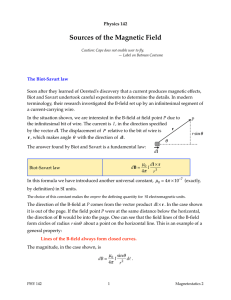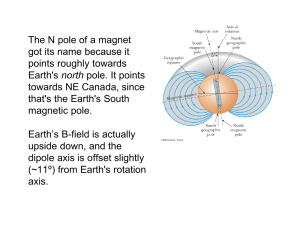REVIEW3 - Colorado Mesa University
advertisement
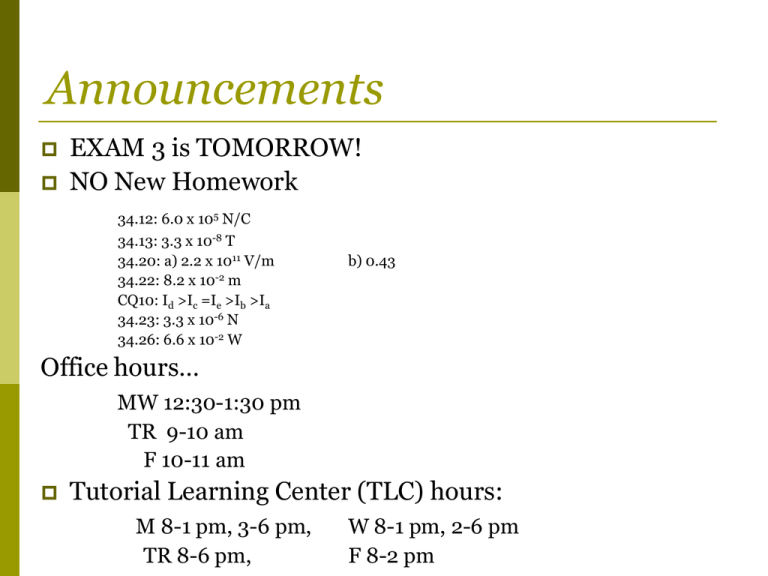
Announcements EXAM 3 is TOMORROW! NO New Homework 34.12: 6.0 x 105 N/C 34.13: 3.3 x 10-8 T 34.20: a) 2.2 x 1011 V/m 34.22: 8.2 x 10-2 m CQ10: Id >Ic =Ie >Ib >Ia 34.23: 3.3 x 10-6 N 34.26: 6.6 x 10-2 W b) 0.43 Office hours… MW 12:30-1:30 pm TR 9-10 am F 10-11 am Tutorial Learning Center (TLC) hours: M 8-1 pm, 3-6 pm, TR 8-6 pm, W 8-1 pm, 2-6 pm F 8-2 pm Quiz Question 1 A vertically polarized light wave of intensity 1000 mW/m2 is coming toward you, out of the screen. After passing through this polarizing filter, the wave’s intensity is 1. 707 mW/m2. 2. 500 mW/m2. 3. 333 mW/m2. 4. 250 mW/m2. 5. 0 mW/m2. Polarizers and Analyzers… Malus’s law can be demonstrated with two polarizing filters… The first, called the polarizer, is used to produce polarized light of intensity I0. The second, called the analyzer, is rotated by angle relative to the polarizer. Polarizers and Analyzers… The transmission of the analyzer is 100% when 0, and steadily decreases to zero when 90. Two polarizing filters with perpendicular axes block ALL the light. If the incident light on a polarizing filter is unpolarized, half the intensity is transmitted: Outline… CH 32 – The B-Field Magnetism The Discovery of the B-Field The Source of the B-Field: Moving Charges The B-Field of a Current Magnetic Dipoles The Magnetic Force on a Moving Charge Magnetic Forces on Current-Carrying Wires Forces and Torques on Current Loops CH 33 – Electromagnetic Induction Induced Currents Motional emf Magnetic Flux Lenz’s Law Faraday’s Law CH 34 – Electromagnetic Fields and Waves Electromagnetic Waves Properties of Electromagnetic Waves Polarization QQ1 Unpolarized light, traveling in the direction shown, is incident on polarizer 1. Does any light emerge from polarizer 3? 1. Yes. 2. No. QQ2 The graph shows the magnitude of B that is perpendicular to the plane of a conducting loop. Rank the four regions indicated on the graph according to the magnitude of the emf induced in the loop, from least to greatest. B 2 1. 1, 2, 3, 4 2. 2, 4, 3, 1 3. 4, 3, 1, 2 4. 1, 3, 4, 2 5. 4, 3, 2, 1 1 3 4 t QQ3 A proton traveling east experiences a B-field that point south. The proton will experience a force in which direction? 1. south 2. north 3. west 4. up 5. down QQ4 Two parallel wires carrying current in the same direction will: 1. attract each other 2. repel each other 3. exert no force on each other. QQ5 The magnetic force on a charged particle is in the direction of its velocity: 1. If it is moving in the direction of the field. 2. If it is moving opposite to the direction of the field. 3. If it is moving perpendicular to the field. 4. If it is moving in some other direction. 5. Never. QQ6 The diagram shows a straight wire carrying a flow of electrons into the page. The wire is between the poles of a permanent magnet. The direction of the magnetic force exerted on the wire is: N S 1. Up. 2. Down. 3. Left. 4. Right. 5. The wire experiences a torque, but no net force.

